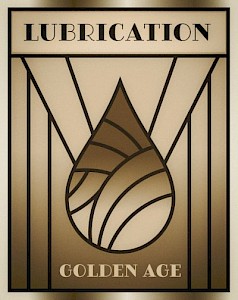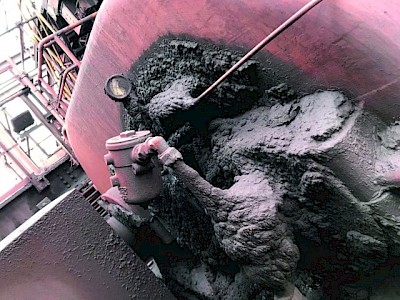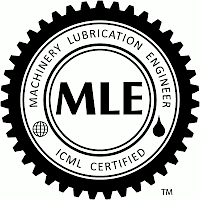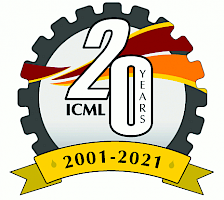The Golden Age of Lubrication
As Noria enters its 24th year, we have a lot to be thankful for. It is particularly gratifying to see organizations vigorously practising what we have been teaching for years. Many impressive success stories have been shared.
Contamination control has been a constant theme at Noria, and for good reason. It speaks to the real root of a lot of problems. Not just the dirt we can see or feel, but also those tiny and invisible particles many believed were harmless. Instead, we now know they wreak havoc on even the strongest and most powerful of our machines. Every maintenance professional should know that for most machines, “Ten times cleaner oil results in 50 times longer machine life.” This is not fantasy.
 The body of evidence that justifies investment in real changes to lubrication and reliability is enormous. This is the main reason I titled my column “The Golden Age of Lubrication.” There is so much untapped potential available if organizations invest in fundamental things such as education, certification, machine modification, contamination control, standardized work and so much more.
The body of evidence that justifies investment in real changes to lubrication and reliability is enormous. This is the main reason I titled my column “The Golden Age of Lubrication.” There is so much untapped potential available if organizations invest in fundamental things such as education, certification, machine modification, contamination control, standardized work and so much more.
Noria’s founding business model of publishing, education and services could not have been more intentional. That same business model persists today and is backed by the six basic premises that follow.
1. Pay Attention to What Works
During the pre-Noria years, I was obsessed with collecting case studies. I amassed hundreds of them, looking for common threads. What did highly successful lubrication programs do that others did not, or at least did not do well? I found many.
From that collective knowledge, we discovered a new maintenance philosophy that we now call proactive maintenance. This maintenance philosophy is not about searching for machine faults and predicting a future failure. It is about instilling a machine lifestyle change that suppresses the very essence of failure. It is an aspirational pursuit of a sustainable state of reliability. Not only does it work, it also preserves maintenance budgets and costs less overall than other practices.
Reliability is a lot like quality. As W. Edwards Deming (father of the quality movement) is famous for saying, “You cannot inspect quality into a product." The same is true for reliability. Condition monitoring tries to “cull out” bad reliability, machine faults etc. by giving them encouraging names like “saves.” Instead, what we really need is a zero-faults policy related to machine reliability similar to the “zero-defects” that Six Sigma aspires to achieve. This is the foundation of proactive maintenance.
2. The Most Controllable Expenditure in a Plant
Maintenance is the No. 1 most controllable expenditure in a plant...PERIOD! Everything hinges on what is controllable. While there are always things we can’t change, there are far more things within our realm of control.
Most of us have heard of the Pareto Principle, also known as the 80:20 rule (e.g., 20% of the causes of failure are responsible for 80% of the occurrences of failure). This is a simple concept that helps us properly focus our time and resources. When it comes to change, there is a fundamental need to achieve early and decisive wins. This fuels momentum to stay the course and garners support from peers and decision-makers.

But maintenance and reliability are vast concepts, the subjects of hundreds of books. There are so many “controllable” choices to navigate. What should one do first, second, third etc.? Where exactly are those elusive silver bullets and big bang-for-your-buck opportunities? Their discovery is the mission of today’s lubrication and reliability professionals.
3. Find the Hidden Plant
Every plant has a hidden plant that must be found. What does that mean? Basically this: within every plant, there are assets and resources (including people and energy) that go unutilized or underutilized for considerable periods of time throughout a work year.
The extent of unutilized or underutilized assets and resources defines the magnitude of the hidden plant. This is usually where denial creeps in. Many in the maintenance field say they are already “too lean” for there to be a hidden plant. They might also say, for this reason, or that, that they can’t operate production at a higher capacity and certainly not near 100% capacity. A good place to start in solving this paradox is to take a careful look at metrics like planned work versus reactive work for unmet opportunities for change.
Back to proactive maintenance. There are three simple steps to successful implementation that we have gleaned from hundreds of case studies. These are listed below, using the example of lubricant cleanliness to provide context:
- Set target cleanliness levels needed to achieve the reliability objective (e.g., a 2X machine life extension).
- Through contaminant exclusion and removal, achieve the target cleanliness levels.
- Routinely monitor fluid cleanliness to verify that target cleanliness levels have been achieved.
I am guessing that fewer than 10% of maintenance organizations follow these three steps. Those who say they do are unknowingly failing at the most important step: No. 1. Machine life extension is achieved by setting targets significantly lower (cleaner) than historical averages and typically even lower than OEM and laboratory recommendations.
Proactive maintenance is NOT achieved by trying to catch and control “unusually high” contamination levels (a commonly held misconception). Instead, proactive maintenance is achieved by a controlled state of “unusually low” contamination levels. That single concept is the real magic behind proactive maintenance, which can be applied across numerous machine failure modes (root causes) in addition to particle contamination.
Therein lies the hidden plant.
4. The #1 Cause of Failure
We’ve all heard it. Lubrication is the No. 1 cause of machine wear and failure. If we fix lubrication first, we don’t have to fix the machine later. As someone once told me, the vast majority of reportable alarms from routine vibration analysis are rooted in poor lubrication. This includes dirty, wet, aerated oil and so much more.
A good way to substantiate this claim on rotating equipment is simply to tally and rank the most common issues flagged by inspection, vibration, oil analysis, ultrasound and thermography. Knowledge from this exercise can greatly help focus time and resources related to training, certification, condition monitoring tools/activities, machine modifications etc. We’ve learned this from the 500+ plant lubrication assessments we’ve performed over the years. Not only do the assessments confirm this, but they also continue to point out that lubrication programs are often overlooked, underutilized and generally performing at a sub-optimum level.
While good lubrication is not a panacea for many unrelated machine maladies, it should always rank high in reliability resource and program planning. This is strongly supported by the huge body of case studies on reliability.
Figure 1 Legend: TBT=Task-based Training (Noria); CRE=Certified Reliability Engineer (ASQ); CMRP=Certified Maintenance and Reliability Professional. All other acronyms refer to ICML certification designations and levels. Note, TBT is considerably different from certification training. TBT is linked specifically to commonly performed and standardized tasks and procedures.
5. Training and Human Behavior

There is no greater influence on the state of lubrication than training and human behaviour. I often say, “You earn what you learn.” I do not say it because it rhymes or it sounds cool. I say it because, to me, it is an unvarnished fact.
The words “optimum” or “optimization” are commonly used in maintenance and reliability. Their use refers to a balancing of costs, opportunities, benefits and risks. Common examples include PM Optimization (PMO) or the Optimum Reference State (ORS). Can “optimum” be applied to training and education? Most certainly!
Figure 1 is the Education Needs Chart (ENC) for Lubrication Technicians. On the chart are three plotted lines and three zones. The upward sloping green line is the cost of education relative to the amount of education received. The precipitously downward sloping orange line is the cost of ignorance related to the financial consequences of not investing in training for lube techs. The cost of ignorance is largely defined as opportunity cost, such as the opportunity to reduce repair costs and downtime. The blue line is the total of the two: cost of ignorance plus cost of education.
The vertical Yellow Zone relates to a state of under-education and the high associated opportunity costs (penalties). The Blue Zone on the right relates to a state of over-education. Note the cost penalty of over education is negligible. The centre Green Zone relates to the optimum level of education; not too much, not too little. The point of diminishing return is roughly the left edge of this green zone.
Note, this version of the chart only applies to lubrication technicians. A different version of the chart would be used for lubricant analysts and lubrication engineers.
See if you can make sense out of this sentence, “The vast majority of what we need to know is what we don’t know we don’t know.” Or this, “If we don’t know what we don’t know, we can’t seek what we need to know.” Why is this important?
A well-constructed training curriculum organized by people with real practical experience in their field will always include topics that students think they are going to learn. While this is technically true, it should be the bare minimum. The real bounty from high-value training is found in all the extra knowledge students received that they did not anticipate learning about. This type of learning is rarely received from on-the-job training passed down from old-timers and tribal knowledge.
Education teaches us what we need to know. Culture and human behaviour determine whether this knowledge will be put to practical use. Long ago, I learned that lubrication and reliability are more about human behaviour than anything else. For much more on this, see my article “Remedies for a Bad Maintenance Culture.”
6. Change Must be Enabled
All progress depends on change, and change must be enabled. The crisis is an enabler. The world’s greatest examples of major change were all preceded by crises (or chaos). As they say, “don’t let a perfectly good crisis go to waste.”
Of course, the ambition and aspiration of motivated leaders can also enable change. Management of change is a field of professional and academic pursuit. We can’t wait for change to happen by itself. It needs to be intentional - to be driven into existence.
Of course, there are always those who prefer things to remain the same. It is human nature to want to maintain the status quo. However, today we have much more of a “change culture” than ever before. These are people who study successes, follow and enable successes and celebrate successes. As a result, we are seeing excellent examples of change and progress related to lubrication and reliability by user organizations. The golden age is now.
From Dream to Reality
 I’ve been involved with the ICML since it was but a germ of an idea, back in the year 2000. Today, the ICML is world-renowned and is arguably the largest certifying body in the reliability space. It proudly celebrates its 20th anniversary of service to the lubrication and oil analysis community worldwide this year. In 1999, on the sudden passing of my dear friend and colleague Peter Ball, I was appointed to the position of Convenor of Working Group 4 (tribology) for the ISO condition monitoring committee TC108/SC5. We met once or twice each year in such places as Nanjing (China), Vienna and London. The international membership of my working group was extensive. A new standard was under development and later published, now known widely as ISO 18436-4 related to training and certification of machinery lubricant analysts.
I’ve been involved with the ICML since it was but a germ of an idea, back in the year 2000. Today, the ICML is world-renowned and is arguably the largest certifying body in the reliability space. It proudly celebrates its 20th anniversary of service to the lubrication and oil analysis community worldwide this year. In 1999, on the sudden passing of my dear friend and colleague Peter Ball, I was appointed to the position of Convenor of Working Group 4 (tribology) for the ISO condition monitoring committee TC108/SC5. We met once or twice each year in such places as Nanjing (China), Vienna and London. The international membership of my working group was extensive. A new standard was under development and later published, now known widely as ISO 18436-4 related to training and certification of machinery lubricant analysts.
However, with that standard, there was a need for a certifying body to develop and administer testing around the world. That need led to the inception of the ICML. Since then, I’ve served on the ICML’s Board of Directors, and over the ensuing years, we have added many certifications and awards. The most recent is Machinery Lubrication Engineer (MLE) which is the ICML’s flagship certification. In my opinion, the MLE is the most prestigious lubrication distinction on the planet. The development of the MLE was long and arduous, starting with the Body of Knowledge, then the Domain of Knowledge and finally the large bank of test questions. Many lubrication experts shared their time and skills to bring the MLE to fruition. Recently, the ICML’s Executive Director, Leslie Fish, informed me that they have updated their records and currently have over 26,000 individuals who hold one or more certifications. That is an exceptional feat, to say the least. Hats off to the hardworking and outstanding team at ICML!


